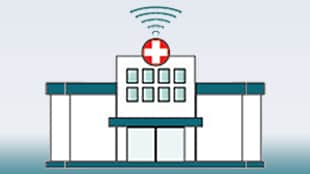Purpose
Health data should represent all people, in all communities. CDC invites health care facilities, health departments, electronic health record vendors, and health information exchanges to integrate their data into the BioSense Platform, a cloud-based early detection and monitoring system that protects Americans from health threats. Here are six compelling reasons to support this process.

Tap into long-term benefits
From broadening disease detection to improving emergency response, there are many compelling reasons for sites to onboard new facilities. Let's look at some reasons offering long-term benefit for your public health department that will also make your workday more interesting and productive.
1. Hospital reporting is required
The Fiscal Year (FY) 2022 Medicare Hospital Inpatient Prospective Payment System (IPPS) and Long Term Care Hospital (LTCH) Rates Final Rule (CMS-1752-F) requires hospital reporting on four of the Public Health and Clinical Data Exchange Objective measures, discussed here. This requirement for Syndromic Surveillance Reporting is an opportunity to onboard facilities that will:
- Support ongoing surveillance activities for respiratory viruses such as COVID-19.
- Improve readiness during the next pandemic or other public health emergency.
2. Data quality will improve
You already have access to several resources, including standards, processes, and NSSP assistance. So, why not take advantage of these resources by onboarding new facilities?
The PHIN Messaging Guide for Syndromic Surveillance, Release 2.0 and associated documents, erratum, and standards have been widely adopted and put in practice by the syndromic community and electronic health record vendors. This eases the way for onboarding new facilities and implementing new syndromic surveillance programs relatively fast (for more information, see Implementation Guides). By using the adopted standards, the quality of your data will be better and your analyses more reliable.
3. Federal incentives are available
Federal incentives are provided for facilities to modernize the ways in which they collect surveillance data via the public health infrastructure. Such incentives encourage compliance with standards for data quality, data transmittal, and system interoperability.
CDC's OE22-2203: Strengthening U.S. Public Health Infrastructure, Workforce, and Data Systems grant funds improvements to critical public health infrastructure needs. This investment, a key component of the American Rescue Plan funding, will help prepare the U.S. public health system to respond to public health emergencies like COVID-19 and meet the evolving and complex needs of communities and populations being served.
4. Surveillance of events that impact health will be more effective
The more facilities, the better the geographic coverage, the more effective the surveillance:
- By adding new facilities in more areas, geographic coverage will increase. This can expand efficacy of data and information sharing across the BioSense Platform.
- By closing gaps in coverage, public health is better positioned to detect new and emerging events—locally, statewide, regionally, and nationally.
5. Syndromic data have cross-cutting application
Syndromic data are not unique to any one system, disease, or condition. Syndromic data provide broad situational awareness across epidemiological program areas; local, state, regional, and national geography; and health care settings.
- Trend analyses across an array of health care settings, health conditions, and diseases will give better insight into public health.
- Timely understanding of the impact of infectious disease (like COVID-19) on injuries and chronic conditions will help put evidence-based interventions in place earlier.
6. Collaboration will improve
Improving collaboration is a win-win for everyone, especially during crises.
Onboarding is a collaborative process that offers opportunity for public health practitioners to assist facility staff, build working relationships, and become familiar with processes before the next emergency strikes. For example, once the new facilities are on board:
- There's more bandwidth to assist with surge capacity during weather-related events.
- Health care service utilization and other system impacts across public health jurisdictions during evacuations can be monitored more thoroughly.
- Resources can be better allocated or adjusted during a pandemic, natural disaster, or other emerging health threat.
Next steps for adding new facilities
Resources
Centers for Medicare & Medicaid Services: Promoting Interoperability Programs
CDC: Data Implementation Support resources are available to help health departments and partners implement the next generation of public health data systems.
